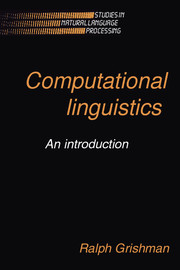Summary
What is the objective of semantic analysis? We could say that it is to determine what a sentence means, but by itself this is not a very helpful answer. It may be more enlightening to say that, for declarative sentences, semantics seeks to determine the conditions under which a sentence is true or, almost equivalently, what the inference rules are among sentences of the language. Characterizing the semantics of questions and imperatives is a bit more problematic, but we can see the connection with declaratives by noting that, roughly speaking, questions are requests to be told whether a sentence is true (or to be told the values for which a certain sentence is true) and imperatives are requests to make a sentence true.
People who study natural language semantics find it desirable (or even necessary) to define a formal language with a simple semantics, thus changing the problem to one of determining the mapping from natural language into this formal language. What properties should this formal language have (which natural language does not)? It should
*be unambiguous
*have simple rules of interpretation and inference, and in particular
*have a logical structure determined by the form of the sentence
We shall examine some such languages, the languages of the various logics, shortly.
Of course, when we build a practical natural language system our interest is generally not just finding out if sentences are true or false.
- Type
- Chapter
- Information
- Computational LinguisticsAn Introduction, pp. 90 - 139Publisher: Cambridge University PressPrint publication year: 1986



